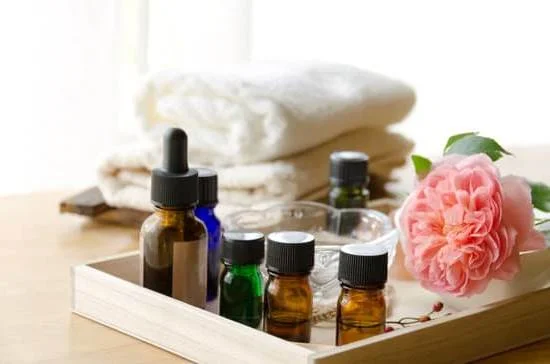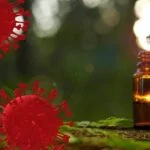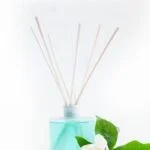Aromatherapy and essential oils have gained immense popularity in recent years as holistic approaches to wellness. With their soothing fragrances and therapeutic benefits, these practices have become integral parts of many individuals’ self-care routines. However, it is important to understand the distinction between aromatherapy and essential oils, as they are often used interchangeably but have unique characteristics that set them apart.
Aromatherapy can be defined as the art of healing with fragrance. It encompasses a range of techniques and applications that utilize the natural scents derived from plants to promote mental, emotional, and even physical well-being. Aromatherapy has a rich history that dates back thousands of years, with cultures around the world recognizing the power of scents in enhancing overall health.
On the other hand, essential oils are concentrated extracts obtained from various parts of plants, such as flowers, leaves, or bark. These oils contain the pure essence of the plant’s fragrance and possess chemical properties that offer therapeutic benefits. While essential oils are commonly used in aromatherapy practices, they can also be employed for other purposes due to their versatile nature.
In this article, we will delve deeper into understanding aromatherapy and essential oils by examining their definitions, histories, techniques of application, and potential benefits. By elucidating the differences between these two practices while exploring their interconnectedness, we aim to equip readers with valuable knowledge that will enhance their journey towards holistic well-being.
Understanding Aromatherapy
Aromatherapy is a holistic healing practice that utilizes the power of fragrances to promote physical, mental, and emotional well-being. This ancient technique has been used for centuries across different cultures and continues to gain popularity in modern wellness practices. The fragrances used in aromatherapy are derived from essential oils, which are extracted from various parts of plants using specialized techniques.
The use of fragrances in aromatherapy has a profound impact on mental and emotional well-being. Different scents have been found to evoke specific responses in the brain, triggering various emotions and influencing mood. For example, lavender essential oil is known for its calming properties and is often used to alleviate stress and promote relaxation. On the other hand, citrus scents like lemon or orange can have an uplifting effect on mood and increase alertness.
There are several techniques and applications in aromatherapy that allow individuals to harness the benefits of fragrance. Inhalation is a common method where essential oils are added to diffusers or inhaled directly from bottles or inhalers.
Topical application involves diluting essential oils with carrier oils, such as almond or coconut oil, and applying them to the skin through massage or compresses. Other methods include bath soaks, steam inhalation, and even adding essential oils to household cleaning products for a soothing scent.
| Aromatherapy Techniques | Description |
|---|---|
| Inhalation | Essential oils are added to diffusers or inhaled directly from bottles or inhalers. |
| Topical Application | Essential oils are diluted with carrier oils and applied to the skin through massages or compresses. |
| Bath Soaks | Essential oils are added to bathwater for a relaxing and fragrant experience. |
| Steam Inhalation | A few drops of essential oils are added to steaming water, creating a soothing vapor. |
It is important to note that aromatherapy should be practiced with caution, and proper usage guidelines must be followed. Essential oils are highly concentrated and powerful substances that can cause adverse reactions if not used correctly. It is recommended to consult a trained aromatherapist or reliable resources for dilution guidelines and safety precautions when using essential oils.
Essential Oils 101
In this section, we will delve into the fascinating world of essential oils and explore their extraction process from plants, as well as their chemical properties and therapeutic benefits. Essential oils are highly concentrated plant extracts that capture the essence and fragrance of a wide variety of plants. These aromatic compounds are obtained through various methods such as steam distillation, cold pressing, or solvent extraction.
Extraction Process: Essential oils are extracted from different parts of plants including flowers, leaves, bark, stems, and roots. The extraction method depends on the specific plant and its chemical composition. For example, steam distillation is commonly used for extracting essential oils from flowers and leaves, while citrus essential oils are often obtained through cold pressing.
Chemical Properties: Essential oils contain complex mixtures of volatile organic compounds (VOCs) that give them their distinct aromas and therapeutic properties. These VOCs include terpenes, alcohols, esters, phenols, and ketones. Each essential oil has a unique chemical profile that determines its potential health benefits.
Therapeutic Benefits: Essential oils have been used for centuries in traditional medicine practices for their therapeutic properties. They can be utilized in various ways to promote physical and emotional well-being. Some common uses of essential oils include relaxation and stress relief, mood enhancement, natural disinfection, skin care, pain relief, respiratory support, and sleep improvement.
It is important to note that essential oils are highly concentrated substances and should be used with caution. Prior to using any essential oil topically or internally, they should be properly diluted to ensure safe usage. Additionally, it is crucial to source high-quality essential oils from reputable brands to ensure purity and efficacy.
By understanding the power behind these natural plant extracts in aromatherapy practices, individuals can harness the benefits of essential oils to enhance their overall wellness. From promoting relaxation to supporting various health needs, essential oils offer a versatile and holistic approach to well-being. Whether diffusing them for their aromatherapy benefits or incorporating them into skincare routines, the potential of essential oils is vast and worth exploring.
Aromatherapy vs Essential Oils
Aromatherapy and essential oils are closely related practices that often go hand in hand. While they are interconnected, there are distinct differences between the two approaches. Understanding these differences is crucial in order to make informed decisions about incorporating them into wellness routines.
Aromatherapy can be defined as the holistic healing practice that utilizes fragrances to promote overall well-being. It has a long history and has been used for centuries across various cultures. Aromatherapy relies on the sense of smell to stimulate the brain, which then triggers certain physiological and emotional responses. This practice encompasses a wide range of techniques and applications, including inhalation, topical application, and even internal consumption in some cases.
On the other hand, essential oils refer to highly concentrated plant extracts that capture the beneficial properties of plants. They are derived through various extraction methods that involve steam distillation or cold-pressing. Essential oils contain numerous chemical compounds that contribute to their therapeutic benefits. These oils can be used in aromatherapy practices but they can also have other applications such as natural cleaning products or personal care items.
In summary, while aromatherapy focuses on harnessing the power of fragrance for healing purposes, essential oils are concentrated plant extracts with various potential applications beyond aromatherapy. By understanding this distinction, individuals can better navigate the world of holistic wellness and make choices that align with their specific needs and goals.
| Aromatherapy | Essential Oils |
|---|---|
| Utilizes fragrances for healing | Concentrated plant extracts |
| Includes techniques like inhalation and topical application | Potential applications beyond aromatherapy (e.g., cleaning products) |
Safety Concerns
Importance of Understanding Safety Precautions
When using aromatherapy and essential oils, it is crucial to prioritize safety and understand the proper usage and dilution guidelines. While these natural products offer numerous benefits, they can also pose risks if not used appropriately. It is essential to educate oneself on the potential hazards associated with aromatherapy and essential oils to ensure a safe and enjoyable experience.
Guidelines for Diluting Essential Oils
One key aspect of using essential oils safely involves dilution. Essential oils are highly concentrated substances that should never be used undiluted on the skin or ingested without proper dilution. Diluting essential oils not only helps prevent adverse reactions or sensitivities but also allows for better absorption by the body.
To dilute an essential oil, a carrier oil such as coconut oil, jojoba oil, or almond oil should be used. A general guideline for dilution is to mix 1-2 drops of essential oil in one teaspoon of carrier oil for topical use. However, this ratio may vary depending on several factors such as the individual’s sensitivity and the purpose of use. It is crucial to conduct thorough research regarding specific essential oils before using them topically or internally.
Recommended Resources for Reliable Information
Due to the vast array of information available on aromatherapy and essential oils, it can be challenging to determine which sources provide accurate and reliable information. When seeking guidance on proper usage and dilution guidelines, it is advisable to consult reputable sources such as certified aromatherapists, scientific studies conducted by reputable organizations, and books written by experts in the field.
Certified aromatherapists have undergone extensive training in understanding the properties and safe usage of essential oils. They can offer personalized guidance tailored to individual needs and circumstances. Additionally, scientific studies conducted by reputable organizations provide evidence-based information on the therapeutic benefits and safety of aromatherapy and essential oils. Finally, books written by experts in the field can provide comprehensive information on proper usage, dilution guidelines, and potential contraindications to be aware of when utilizing aromatherapy and essential oils.
By following proper usage and dilution guidelines provided by reliable sources, individuals can ensure a safe and beneficial experience with aromatherapy and essential oils. Understanding safety precautions not only protects one’s well-being but also enhances their ability to maximize the potential benefits offered by these natural remedies.
Efficacy and Research
Scientific Evidence Supporting Aromatherapy and Essential Oils
As aromatherapy and the use of essential oils continue to gain popularity, it is important to explore the scientific evidence supporting their efficacy in promoting wellness. While many individuals have reported positive experiences with these practices, it is essential to examine the research conducted in this field to better understand their benefits and limitations.
Overview of scientific studies and research
Over the years, numerous studies have been conducted to evaluate the effectiveness of aromatherapy and essential oils. These studies often focus on specific therapeutic benefits such as stress reduction, pain management, sleep improvement, and mood enhancement. Researchers employ a variety of methods including controlled trials, case studies, and surveys to gather data on the impact of aromatherapy and essential oils on individuals’ well-being.
Despite limitations such as small sample sizes or lack of standardized protocols across studies, much research has shown promising results. For example, a review published in the International Journal of Neuroscience found that inhaling lavender essential oil could help improve sleep quality in individuals with insomnia. Another study published in Pain Management Nursing demonstrated that massage therapy using essential oils reduced pain levels in patients with chronic pain.
Limitations and challenges faced by researchers
While scientific research supports many claims made about aromatherapy and essential oils, it is important to acknowledge the limitations and challenges faced by researchers. One common limitation is inconsistency in methodologies and outcome measurements across studies. This can make it difficult to compare results or draw clear conclusions.
Additionally, due to the subjective nature of experiences related to fragrance-based therapies, it can be challenging for researchers to control for placebo effects or accurately quantify responses. However, advancements are being made in developing more rigorous methodologies that account for these factors.
Promising findings and potential benefits
The scientific evidence gathered so far provides a strong foundation for believing in the potential benefits of aromatherapy and essential oils. Research suggests that certain essential oils, such as lavender, peppermint, and bergamot, may have therapeutic properties that can positively impact mental and physical well-being.
For example, a study published in Complementary Therapies in Clinical Practice found that inhaling peppermint essential oil provided relief from nausea and vomiting in post-operative patients. Another study published in the Journal of Multidisciplinary Healthcare reported that using a blend of essential oils reduced stress levels among healthcare professionals.
It is worth noting that more research is needed to better understand the mechanisms through which aromatherapy and essential oils exert their effects. Additionally, future studies should focus on larger sample sizes, standardized protocols, and long-term outcomes to further enhance our understanding of these practices.
Exploring Alternative Applications
Beyond the traditional uses of aromatherapy and essential oils, there are various alternative applications that can further enhance the benefits of fragrance in holistic wellness practices. These applications go beyond inhalation or topical use and delve into complementary practices that incorporate aromatherapy or essential oils in unique ways.
One such application is massage therapy, which combines the power of touch with the therapeutic properties of essential oils. Massage therapists often use diluted essential oils during their sessions to promote relaxation, reduce muscle tension, and enhance overall well-being. The combination of gentle touch and aromatic fragrances creates a deeply soothing experience for both the mind and body.
Similarly, reflexology is another complementary practice that utilizes fragrances to enhance its effects. Reflexology involves applying pressure to specific areas on the feet or hands that correspond to different organs and systems in the body. By incorporating essential oils into the session, either through diffusion or by adding them to a carrier oil for foot/hand massage, practitioners aim to amplify the healing benefits of reflexology.
Aside from these professional practices, individuals can also explore innovative ways to incorporate fragrances into their daily routines for improved well-being. This includes creating personalized blends of essential oils to use as natural perfumes or colognes, diffusing essential oils in living spaces for an uplifting atmosphere, or even incorporating aromatherapy into skincare regimens by using natural products infused with beneficial plant extracts.
By venturing beyond traditional aromatherapy techniques and embracing alternative applications that involve fragrances, individuals can unlock new dimensions of holistic wellness. The integration of aromatherapy or essential oils into practices such as massage therapy, reflexology, or even everyday routines offers a multifaceted approach to well-being that addresses both physical and emotional aspects. Exploring these alternative applications can lead to a deeper appreciation for the power of fragrance in nurturing overall health and balance.
- Mixing essential oils with carrier oils for use during massage therapy
- Incorporating fragrances into reflexology sessions to enhance its effects
- Creating personalized blends of essential oils for use as natural perfumes or colognes
- Diffusing essential oils in living spaces for an uplifting atmosphere
- Using natural skincare products infused with beneficial plant extracts for aromatherapy benefits
Conclusion
In conclusion, the practice of aromatherapy and the use of essential oils are interconnected yet distinct approaches to holistic wellness. Throughout this article, we have explored the definitions and history of aromatherapy as a healing practice, as well as delved into the extraction process and therapeutic benefits of essential oils. We have also highlighted the differences in application methods and consumption between these two practices.
It is important to recognize that both aromatherapy and essential oils hold immense potential in promoting mental, emotional, and physical well-being. By incorporating fragrances into our daily routines, we can tap into the power of scent to enhance our overall wellness.
Whether it is through inhalation or topical use of essential oils, or by exploring alternative applications such as massage therapy or reflexology, there are numerous ways to experience the benefits of fragrance in our lives. By understanding proper usage guidelines and safety precautions, we can ensure that we harness the power of aromatherapy and essential oils responsibly.
As researchers continue to explore and uncover scientific evidence supporting aromatherapy and essential oils, it is clear that this field holds much promise for improving individual wellness. Although limitations and challenges exist in conducting research on these practices, there is growing interest in their potential health benefits.
In essence, fragrance has an undeniable impact on our mind-body connection, serving as a powerful tool for achieving holistic well-being. By unlocking the power of fragrance through aromatherapy techniques and incorporating essential oils into our routines, we can embark on a journey towards improved mental clarity, emotional balance, and physical vitality.
Therefore, let us embrace the potential of aromatherapy and essential oils in our quest for holistic wellness. By exploring their benefits and integrating them into our lives consciously and responsibly, we can enhance our overall well-being as we nourish the interconnectedness between mind, body, and fragrance.
Frequently Asked Questions
Are essential oils the same as aromatherapy?
Essential oils are not the same as aromatherapy. Essential oils are concentrated plant extracts that retain the natural fragrance and properties of the plant they are derived from. They are commonly used in various applications, including but not limited to aromatherapy.
Aromatherapy, on the other hand, is a holistic healing practice that utilizes essential oils for their therapeutic effects on the mind and body. While essential oils are often a key component of aromatherapy, they are not synonymous with it.
Do essential oils work for aromatherapy?
Yes, essential oils work effectively for aromatherapy. Aromatherapy utilizes the powerful scents and therapeutic properties of essential oils to promote relaxation, improve mood, relieve stress, alleviate pain, and address various physical and emotional concerns.
When used appropriately and in conjunction with proper techniques, essential oils can have a profound impact on our well-being during an aromatherapy session. However, it’s important to note that individual responses to essential oils may vary, so what works for one person may not work as effectively for another.
Can I use aromatherapy oils on my skin?
Aromatherapy oils can be safely used on the skin if diluted properly and used according to recommended guidelines. While some essential oils can be applied directly to the skin in certain circumstances (such as lavender or tea tree oil for minor burns or insect bites), most essential oils require dilution in a carrier oil before applying topically.
Carrier oils like coconut oil or jojoba oil help reduce the concentration of the potent essential oil and prevent skin irritation or sensitization reactions. It’s crucial to ensure you’re using high-quality oils suitable for dermal application and to perform a patch test before applying any new oil directly to a larger area of your skin to avoid potential adverse reactions or allergies.

Are you looking for a natural way to improve your health and wellbeing?
If so, aromatherapy may be the answer for you.





